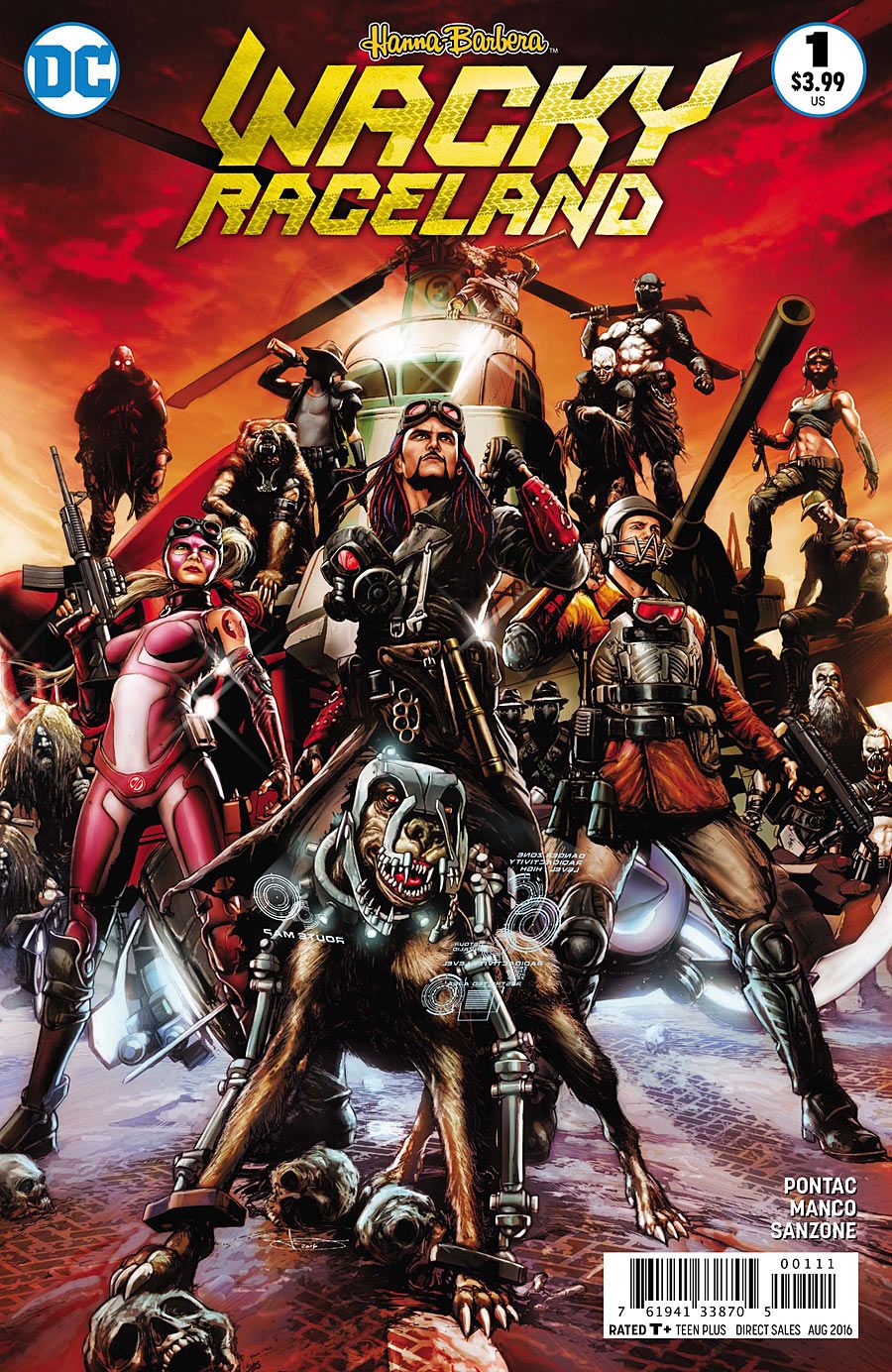In "Wacky Raceland" #1, writer Ken Pontac and artist Leonardo Manco transform "Wacky Races" -- a kids' cartoon from the late-1960s -- into a cutthroat post-apocalyptic race to a promised Utopia that reads like a cross between the "Mad Max" films and Marvel's "Ghost Racers" miniseries from last summer. It's an interesting, albeit violent reboot that replaces the charm of the original cartoon with bloodlust and bar fights.
"Wacky Races" ran for just 17 episodes from September 1968 to January 1969 on CBS. The format was simple and entertaining, with 11 race teams competing in a cross-country race using vehicles that were all stylized to their drivers' unique personalities. I recommend you have some fun and watch excerpts from the show on YouTube before you read this comic series; they'll serve as quite the contrast to the violent, vibrant blitz of DC's new interpretation.
In "Wacky Raceland" #1, Pontac hasn't simply updated the innocent '60s classic for the new millennium; he takes the show's best features and pumps them full of steroids, trains them at Wrestlemania, asks the Umbrella Corporation to genetically re-engineer them and allows the art directors from 2008's "Death Race" and 2015's "Mad Max: Fury Road" to redesign the vehicles. That's not necessarily a bad thing; this dystopia is as dangerous as its denizens, and it's a great setting for a no-holds-barred race.
Pontac's script establishes the individuality of the racers through near-constant flashbacks that illustrate how the vehicles received their amazing updates in a world devastated by environmental disasters. Because Pontac's script is non-linear, we hop between time periods too often and the story is difficult to follow; rather than complementing the story as intended, the flashbacks are so frequent and so long that they ultimately detract from it.
Leonardo Manco's gritty art style serves Pontac's world well and the vehicles are definitely cool looking, but his panel construction is too tightly focused at times, which weighs down the sense of speed needed for tension. What's more, there is no artistic contrast to indicate whether we are in the present or in a flashback, forcing readers to the top of pages to read their location and timeframe. Some additional consideration here would have made for an easier flow in this inaugural issue. Colorist Mariana Sanzone sets an appropriately desolate tone to this world and has the added responsibility of differentiating between the dialogue of the drivers, sentient vehicles and the announcer, which is achieved by coloring their word balloons, as letterer Sal Cipriano doesn't change fonts for those different voices.
Pontac and Manco's "Wacky Raceland" is an interesting reboot that will be more entertaining if they can balance its near-constant violence with a semblance of humor and let the day's race move from start to finish without allowing the flashbacks to derail the story.

